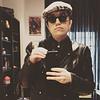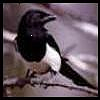Take a photo of a barcode or cover
Loved loved loved this book. It was EVERYTHING i wanted and needed in the moment. My big complaint is that it wasn't longer. I could have read it for 500 pages
emotional
hopeful
sad
fast-paced
Strong character development:
Yes
Loveable characters:
Yes
Diverse cast of characters:
Yes
Short review: Girls. I love girl. Girl r gr8. LADIES!!!!!!!! ... BUT SERIOUSLY, this was so much fun and so sweet and tender and the writing was lovely so I am TOTALLY gonna read more by Ellen Klages.
Passing Strange is about the queer scene in San Francisco in the 1940s, but specifically the lesbian scene. Tourists flock to the cities within the city: the World's Fair, the 'forbidden' city of Chinatown, the 'alien' world of exotic food and 'authentic' experiences at nightclubs. Inspired by the pulps, film noir, six women find that their lives intertwine with each others' more than they initially thought. They discover love and danger on the borders where magic and science intersect, where outcasts from conventional society can meet in city. The magic part, without spoiling anything, is all about escape and avoiding these conventional worlds for the unconventional, and also possibly for safe havens.
Also there's a cameo of Diego Rivera just after he divorced Frida but the main character is all like, LOL IT'S COOL WE SLEPT TOGETHER ONCE. IT'S FINE. ?!?!? And this character is an artist too with flowing blonde hair and it makes me cry because WIFE. ME. UP.
Anyway, this book is super lovely and a short read, and even though a bit disjointed at times, is a great sapphic short.
https://hercommonplaceblog.wordpress.com/
Passing Strange is about the queer scene in San Francisco in the 1940s, but specifically the lesbian scene. Tourists flock to the cities within the city: the World's Fair, the 'forbidden' city of Chinatown, the 'alien' world of exotic food and 'authentic' experiences at nightclubs. Inspired by the pulps, film noir, six women find that their lives intertwine with each others' more than they initially thought. They discover love and danger on the borders where magic and science intersect, where outcasts from conventional society can meet in city. The magic part, without spoiling anything, is all about escape and avoiding these conventional worlds for the unconventional, and also possibly for safe havens.
Also there's a cameo of Diego Rivera just after he divorced Frida but the main character is all like, LOL IT'S COOL WE SLEPT TOGETHER ONCE. IT'S FINE. ?!?!? And this character is an artist too with flowing blonde hair and it makes me cry because WIFE. ME. UP.
Anyway, this book is super lovely and a short read, and even though a bit disjointed at times, is a great sapphic short.
https://hercommonplaceblog.wordpress.com/
mysterious
reflective
slow-paced
Strong character development:
Yes
Loveable characters:
Yes
Diverse cast of characters:
Yes
Flaws of characters a main focus:
Complicated
Ellen Klages' novella, Passing Strange, is a rich science fantasy that explores many transitions - passings - across diverse borders. The narrative begins with an account of the final days of Helen Young, an American woman of Japanese heritage who has spent much of her life passing in one way or another. When we met her, she is very old, dying of some unspecified condition. One of her last acts before her self-administered final passing is to sell an original drawing - the last drawing - of the highly collectible pulp artist known as Haskel.
The narrative then moves back in time to the early days of the second world war, to San Francisco's hidden gay world. Here again Helen is passing, in multiple ways. As a straight woman - she is married, to a gay Asian man - and as Chinese - her married name in ambiguous and as she herself notes, most white people can't tell Asians if different nationalities apart. She is also a lawyer, but 'passes' as an exotic dancer to make ends meet. And she models Asian characters, male and female, for Haskell's covers.
Haskell is, like Helen, a lesbian, and passing professionally as a man to sell their art. As the story progresses, she meets and falls in love with Emily, a young butch and drag king performer who sings at the local lesbian bar.
Klages writes with great detail and empathy about the lives of lesbians in pre-war San Francisco, the different experiences of those, usually femmes like Helen and Haskell, who can pass, and the butches and dykes who cannot pass and thus draw the most reaction from the straight world of police and gawking voyeuristic tourists. The fears of discovery and subsequent loss, the courage to go on in spite of all this.
There's another dimension of passing in the story, besides that of the boundaries of gender. There are also passages across the borders of science and magic, reality and illusion. We meet Franny, a witch of sorts, with the gift of translocation, of passing magically between geographically separated points by folding the maps she creates, and her partner Babs, a mathematics professor who is trying to develop a branch of topological math that can describe what Franny does. And Polly, a young relative of Franny's from England whose passion is science, which she uses to help develop acts for her magician-father. And eventually, we learn the story of Haskell's grandmother, who used magic to pass through danger by turning life into art, and then back into life.
The story of Emily and Haskell's romance is both sweet, and fraught with danger because of their transgressive sexuality, and ultimately they must make use of Haskell's family magic to escape when there is no other way, a strange and magical passage into another life.
Klages fills her narrative with borders, boundaries, crossings, passages and transformations, from the great passings of life and death to the small changes in colour and appearance brought about by different lighting. What remains the same, despite transformations, is loyalty, friendship, and love.
If there is any weakness to this story, it's that there's not enough. The principal characters are drawn with such clarity and depth that one wants to know so much more about all of them, their lives after this moment in time. I had an overwhelming feeling that each woman mentioned has a marvellous story waiting to be told, about how they came to be in this place and time, and where they went from there. And I want those stories.
The narrative then moves back in time to the early days of the second world war, to San Francisco's hidden gay world. Here again Helen is passing, in multiple ways. As a straight woman - she is married, to a gay Asian man - and as Chinese - her married name in ambiguous and as she herself notes, most white people can't tell Asians if different nationalities apart. She is also a lawyer, but 'passes' as an exotic dancer to make ends meet. And she models Asian characters, male and female, for Haskell's covers.
Haskell is, like Helen, a lesbian, and passing professionally as a man to sell their art. As the story progresses, she meets and falls in love with Emily, a young butch and drag king performer who sings at the local lesbian bar.
Klages writes with great detail and empathy about the lives of lesbians in pre-war San Francisco, the different experiences of those, usually femmes like Helen and Haskell, who can pass, and the butches and dykes who cannot pass and thus draw the most reaction from the straight world of police and gawking voyeuristic tourists. The fears of discovery and subsequent loss, the courage to go on in spite of all this.
There's another dimension of passing in the story, besides that of the boundaries of gender. There are also passages across the borders of science and magic, reality and illusion. We meet Franny, a witch of sorts, with the gift of translocation, of passing magically between geographically separated points by folding the maps she creates, and her partner Babs, a mathematics professor who is trying to develop a branch of topological math that can describe what Franny does. And Polly, a young relative of Franny's from England whose passion is science, which she uses to help develop acts for her magician-father. And eventually, we learn the story of Haskell's grandmother, who used magic to pass through danger by turning life into art, and then back into life.
The story of Emily and Haskell's romance is both sweet, and fraught with danger because of their transgressive sexuality, and ultimately they must make use of Haskell's family magic to escape when there is no other way, a strange and magical passage into another life.
Klages fills her narrative with borders, boundaries, crossings, passages and transformations, from the great passings of life and death to the small changes in colour and appearance brought about by different lighting. What remains the same, despite transformations, is loyalty, friendship, and love.
If there is any weakness to this story, it's that there's not enough. The principal characters are drawn with such clarity and depth that one wants to know so much more about all of them, their lives after this moment in time. I had an overwhelming feeling that each woman mentioned has a marvellous story waiting to be told, about how they came to be in this place and time, and where they went from there. And I want those stories.
adventurous
dark
emotional
funny
mysterious
medium-paced
Strong character development:
Yes
Loveable characters:
Yes
Diverse cast of characters:
No
Flaws of characters a main focus:
Yes
Graphic: Domestic abuse, Violence, Police brutality
Oh wow, this was so sweet and great. The characters were effortlessly written and the setting was so unique. It was one of those books that when you finish it everything comes full circle and you don’t know if you should smile or cry. I️ did think the “magic” elements were introduced kinda late and sometimes the descriptions were very written, but those are my only faults, otherwise a perfect story.
Es una historia de amor perfecta entre dos mujeres.
La descripción de San Francisco a finales de la Segunda Guerra Mundial es preciosa, así como la vida en la barrios marginales y queer que la han hecho tan famosa. Así como la percusión y el trato específico que suelen recibir las mujeres queer en manos de la policía.
La búsqueda de la felicidad, de un espacio al cual pertenecer, el apoyo de la familia extendida y poco de magia para lograr la felicidad.
La descripción de San Francisco a finales de la Segunda Guerra Mundial es preciosa, así como la vida en la barrios marginales y queer que la han hecho tan famosa. Así como la percusión y el trato específico que suelen recibir las mujeres queer en manos de la policía.
La búsqueda de la felicidad, de un espacio al cual pertenecer, el apoyo de la familia extendida y poco de magia para lograr la felicidad.
I wanted to like this book, but the character voices felt a bit strained, and I felt like a tourist being shown parts of a time shifted San Francisco, never fully drawn into the world.
Lovely little novella. The fantasy is more around the edges at perfect wish-fulfillment moments. But mostly it's about hanging out with a group of lesbian and bi- women who live in San Francisco in the 1040s and form their own version of a family. The details are pretty delicious--chalk-paintings sprayed with fish oil to protect them, pulp fiction covers with lurid covers, underground clubs, boarding schools. The sexism, homophobia and racism of the time is handled matter-of-factly, and while it affects the characters deeply, the fun is watching them be happy anyway.
The ending, especially, hits just the right happy, funny note.
The ending, especially, hits just the right happy, funny note.





